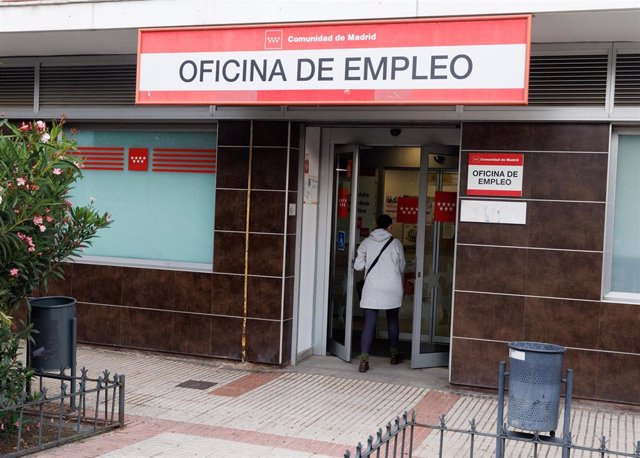Both entities advocate for "a new way of measuring" unemployment, which takes into account the unemployment rate, its duration and the loss of income.
MADRID, 7 Dic. (EUROPA PRESS) -
30% of the unemployed bear 90% of the social cost of unemployment, that is, the loss of well-being generated by the lack of work in the entire population, according to a study by the BBVA Foundation and the Valencian Institute of Economic Research (Ivie).
This 30% who bear the burden of the social cost of unemployment are basically people over 45 years of age, who have been unemployed for more than two years, do not receive any benefits, have a medium-low educational level and are, for the most part, women.
The study shows that, although the unemployment rate is the variable most used to measure the incidence of unemployment in a country, it does not account for the effects that unemployment causes, with different intensity, on the personal well-being of the unemployed. both in loss of income and self-esteem.
"By focusing our attention on the unemployment rate, we are ignoring fundamental information about the situation of the labor market and the dimension of the social problem that lack of employment represents. Unemployment rates are very far from providing the information necessary to assess the impact of unemployment in society, because there is clear evidence that while a part of the unemployed population enters employment, another part becomes chronic," the study highlights.
For this reason, the BBVA Foundation and the Ivie believe that "a new way of measuring unemployment" is necessary, which takes into account not only the unemployment rate but also its duration and the lost income of unemployed people.
"Only in this way will we have a precise vision of the implications of this social problem and an adequate basis for designing policies to combat it and assess its effects," they defend.
The study highlights that unemployment represents a waste of resources and a reduction in both personal well-being (loss of income and self-esteem) and social well-being (problems of integration and social cohesion).
These "unwanted" effects, warn the authors of the report, "are magnified" in the case of long-term unemployment, which also tends to become chronic, or when the unemployed are not entitled to any benefits.
The latest Active Population Survey (EPA) reflects an unemployment rate of 11.8% in Spain, compared to the 27% that was almost reached in 2012. However, the BBVA Foundation and Ivie warn that "this good figure is less positive when the duration and benefit coverage of unemployed people is also analyzed.
Thus, they state that more than 41% of the more than 2,850,000 unemployed are long-term unemployed (more than a year without work) and 28% have remained unemployed for more than two years (about 700,000 workers). Furthermore, two-thirds of unemployed people do not receive any type of unemployment benefit.
"This inability of the unemployment rate to reflect very relevant social aspects of unemployment has caused both institutions and the academic field to rethink the measurement of unemployment," notes the report, which gives as an example the proposal of Brussels to resort to the notion of "slack in the labor market".
What the BBVA Foundation and the Ivie do in this study is to approach unemployment from the perspective of its social cost, interpreting it as a loss of social well-being. To do this, they combine three different dimensions: incidence (unemployment rate), severity (average duration of unemployment and income lost due to remaining unemployed), and hysteresis (probability of remaining unemployed).
To calculate the social cost of unemployment, the authors estimate the income that each worker has lost due to being unemployed (difference between the salary they would obtain and the amount of the unemployment benefit or subsidy), and their loss of well-being, calculated using the lost income for the entire time she remains unemployed. Finally, the sum of the total income lost by all unemployed people gives the social cost of unemployment (CSD).
The data reflect that the fall in the unemployment rate has not been sufficient to compensate for the deterioration in the well-being of people who remain unemployed, particularly those who are long-term, and that there is a diversity of situations, both by type of unemployed and among the autonomous communities.
In the opinion of the BBVA Foundation and the Ivie, this means that "the average variables have little informative value and, therefore, it is necessary to address the problem of measuring unemployment with more informative indicators and developing tailored policies focused on the most vulnerable groups".
According to this study, the Balearic Islands is the region with the lowest social cost of unemployment because it is the region in which the average duration of unemployment is notably lower than the rest.
The Basque Country, on the other hand, has a longer average duration of unemployment than the rest of the regions and a greater wage loss due to lack of employment. These two factors explain the high social cost of unemployment despite having the lowest unemployment rate.













